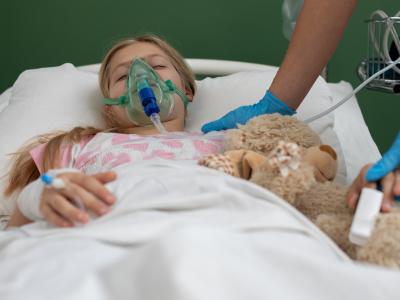Studies examine dental antibiotic prescribing in VA patients
Two studies yesterday in Infection Control & Hospital Epidemiology provide a snapshot of dental antibiotic prescribing among Veterans Affairs (VA) dental patients.
In one study, to establish a baseline for national antibiotic prescribing for acute oral infections prior to the release of the American Dental Association (ADA) 2019 guidelines, a team of VA researchers analyzed national VA data for 2017. They identified cases of three common acute oral infections—irreversible pulpitis (IP), apical periodontitis (AP), and acute apical abscess (AAP)—for which antibiotics are not recommended under the 2019 ADA guidelines, and included any antibiotics prescribed within 7 days of a dental clinic visit.
Of the 470,039 dental clinic visits in 2017, 12% of patients with IP, 17% with AP, and 28% with AAP received antibiotics. Although the median days' supply of antibiotics for patients with a prescription was 7, prolonged antibiotic use was frequent: 42.5% of IP visits, 44.9% of AP visits, and 49.4% of AAP visits received antibiotics for more than 8 days. Multivariable logistics regression identified patients with high-risk cardiac conditions, prosthetic joints, and endodontic, implant, and oral and maxillofacial surgical procedures as more likely to receive antibiotics.
The study authors say that while guideline-discordant treatment was low, the findings may serve as a benchmark for future antibiotic stewardship efforts within the dental setting.
"The guideline-discordant antibiotic prescribing observed within the study may represent unnecessary antibiotic prescribing placing patients at increased risk of adverse events without providing any meaningful benefit," they wrote.
Mar 2 Infect Control Hosp Epidemiol abstract
In the other study, some of the same researchers found that the rate of infection after getting teeth pulled was no different among VA patients who received antibiotics and those who did not.
Of 69,610 patients with dental extractions identified from 2017 national VA data, 404 were randomly selected for inclusion, and 154 (38.1%) received adjunctive antibiotics. An analysis of electronic health records found no difference in the frequency of post-extraction oral infection among those who did and did not receive antibiotics (4.5% versus 3.2%).
"These results suggest that antibiotics have a limited role in preventing postprocedural infection," the authors wrote.
Mar 2 Infect Control Hosp Epidemiol abstract
H9N2 avian flu infects 3 children in China
China has reported three more H9N2 avian flu cases, all in young girls, the World Health Organization (WHO) Western Pacific regional office said in its most recent weekly update on avian flu.
The children are from three different provinces, one had known exposure to poultry, and all had mild infections, a pattern common to H9N2 infections. The first is a 1-year-old girl from Sichuan province, the second is a 5-year-old girl from Anhui province, and the third is a 2-year-old girl from Jiangxi province.
Their symptoms began between Nov 30 and Jan 18. All have recovered, and so far, no other infections have been found among their contacts.
China has reported 5 H9N2 cases this year, and so far, the country has reported 43 cases since December 2015. Sporadic H9N2 cases have been reported in China and other countries where the virus is endemic in poultry.
Feb 26 WHO Western Pacific regional office avian flu report












